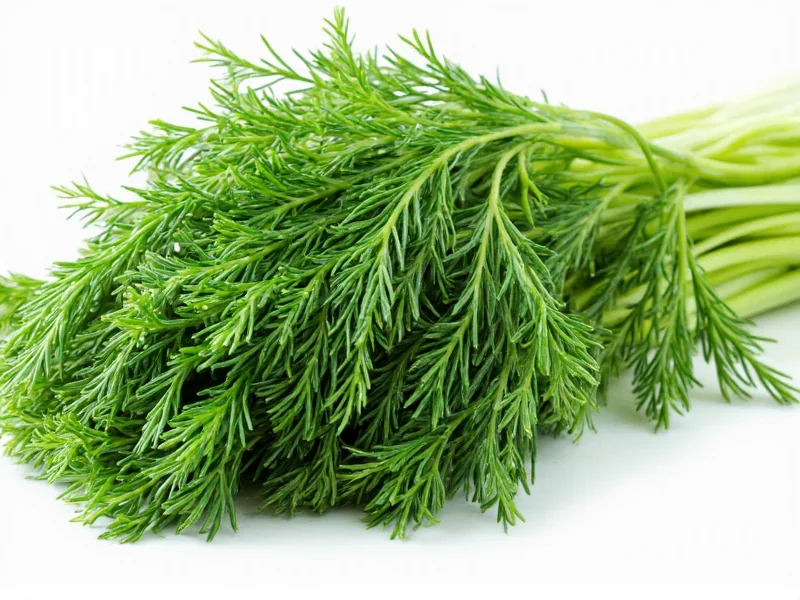When your recipe calls for fresh dill but your herb garden is bare, knowing the right substitution can save your dish from blandness. Fresh dill's distinctive flavor—slightly sweet with grassy, anise-like notes—is essential in Scandinavian, Eastern European, and Mediterranean cuisines. Understanding proper fresh dill substitute measurements ensures your pickles, salmon, or tzatziki maintain authentic flavor profiles without compromising quality.
Understanding Dill's Unique Flavor Profile
Dill's delicate flavor contains compounds like carvone and limonene that create its signature tangy-sweet profile. Unlike robust herbs like rosemary or thyme, dill loses potency quickly when dried, making substitution ratios critical. The herb's volatile oils dissipate within hours of cutting, which explains why dried alternatives require careful measurement adjustments. When considering what to use instead of fresh dill in potato salad, remember that creamy dishes benefit from slightly stronger substitutes since dairy mutes herbal notes.
Top Fresh Dill Substitutes Ranked
Not all dill alternatives work equally well across recipes. The ideal substitute depends on your dish's primary ingredients and cooking method. Here's how common alternatives compare:
| Substitute | Conversion Ratio | Best For | Limitations |
|---|---|---|---|
| Dried dill weed | 1 tsp dried = 1 tbsp fresh | Pickling, soups, stews | Lacks brightness; add late in cooking |
| Fresh tarragon | 1:1 replacement | Fish, egg salads, dressings | Stronger licorice note |
| Parsley + chervil (50/50) | 1:1 replacement | Cold dishes, salads, dips | Milder overall flavor |
| Dill pickle juice | 1 tbsp juice = 1 tbsp fresh | Marinades, dressings, sauces | Adds saltiness; reduce added salt |
When Dried Dill Works Best as a Fresh Dill Alternative
Dried dill remains the most practical fresh dill substitute for pickling cucumbers since the vinegar environment rehydrates the herb's essential oils. For every tablespoon of fresh dill required, use one teaspoon of dried dill weed. Add dried dill during the last 10 minutes of cooking to preserve volatile compounds—adding it too early causes flavor degradation. In Scandinavian gravlax recipes, dried dill works surprisingly well when combined with lemon zest, which mimics fresh dill's citrus undertones.
Creative Herb Combinations for Specific Dishes
Certain dishes demand tailored approaches when substituting fresh dill in salmon recipes. For baked salmon:
- Mix equal parts fresh tarragon and parsley with a pinch of fennel pollen
- Add lemon zest to replicate dill's bright top notes
- Include one crushed dill pickle spear per fillet for authentic flavor
For tzatziki sauce where dill is non-negotiable, combine:
- 2 parts fresh mint
- 1 part fresh parsley
- 1 teaspoon dill weed
- 1 tablespoon dill pickle juice
When Not to Substitute Fresh Dill
Some dishes suffer significantly without genuine dill. Traditional Polish ogórkowa (dill pickle soup) requires fresh dill heads for proper fermentation. Scandinavian gravlax loses authenticity without fresh dill's enzymatic action during curing. When making fresh dill substitute for cucumber salad, avoid strong herbs like cilantro or basil that overwhelm delicate flavors. In these cases, consider modifying the recipe rather than substituting—cucumber salad with mint and lemon makes a delicious alternative when dill's unavailable.
Maximizing Fresh Dill's Shelf Life
Prevent future substitution emergencies by extending fresh dill's viability:
- Store stems in water like cut flowers, covered loosely with plastic bag
- Freeze whole sprigs in olive oil cubes for cooking applications
- Dry dill heads upside down in dark, ventilated space for homemade dried dill
- Preserve in vinegar for instant dill-flavored dressings
Growing Your Own Dill Supply
For reliable fresh dill access, grow it in containers. Dill thrives in 6-8 hours of sunlight with well-draining soil. Harvest outer stems first to encourage bushier growth. Succession planting every 3 weeks ensures continuous supply. When exploring fresh dill substitute options for home gardeners, remember that dill attracts beneficial insects like ladybugs that protect other garden plants.
Frequently Asked Questions
Can I use dill seed instead of fresh dill?
Dill seed has a stronger, more pungent flavor than fresh dill and works differently in recipes. Use 1/4 teaspoon dill seed to replace 1 tablespoon fresh dill, primarily in pickling or bread recipes. It won't substitute well in fresh applications like salads or dips where fresh dill's delicate flavor shines.
What's the best fresh dill substitute for tzatziki?
For tzatziki, combine fresh mint and parsley in a 2:1 ratio with a pinch of dried dill weed and one tablespoon of dill pickle juice per cup of yogurt. This mixture replicates dill's flavor profile while maintaining the sauce's traditional texture and balance.
How do I adjust recipes when substituting dried for fresh dill?
Use a 1:3 ratio—1 teaspoon dried dill equals 1 tablespoon fresh dill. Add dried dill during the last 5-10 minutes of cooking since heat degrades its flavor compounds faster than fresh dill. In cold dishes like salads, rehydrate dried dill in warm water for 5 minutes before using to improve flavor release.
Can tarragon replace fresh dill in fish recipes?
Yes, tarragon makes an excellent fresh dill substitute in fish recipes due to its similar anise notes. Use equal amounts of fresh tarragon for fresh dill. For stronger fish like salmon, add a pinch of fennel fronds to better mimic dill's flavor complexity. Avoid using dried tarragon as it develops bitter notes when cooked.
Does dill pickle juice work as a fresh dill substitute?
Dill pickle juice effectively substitutes fresh dill in dressings, marinades, and sauces. Use 1 tablespoon pickle juice per tablespoon of fresh dill required, but reduce added salt by 1/4 teaspoon per cup of liquid to account for the brine's sodium content. It won't work as a substitute in dishes where fresh herb texture matters.











 浙公网安备
33010002000092号
浙公网安备
33010002000092号 浙B2-20120091-4
浙B2-20120091-4